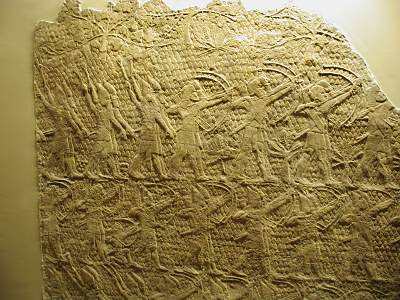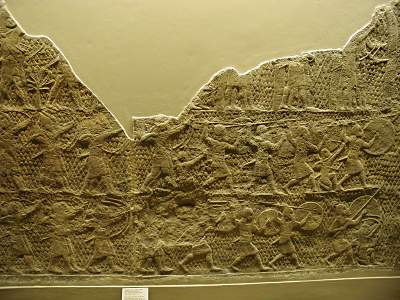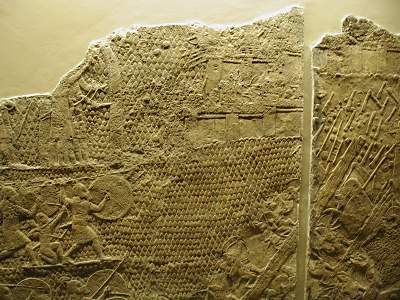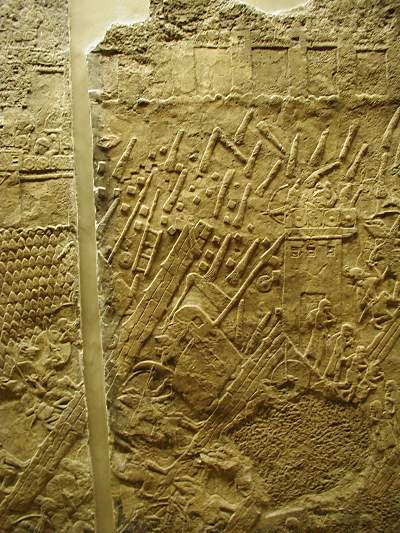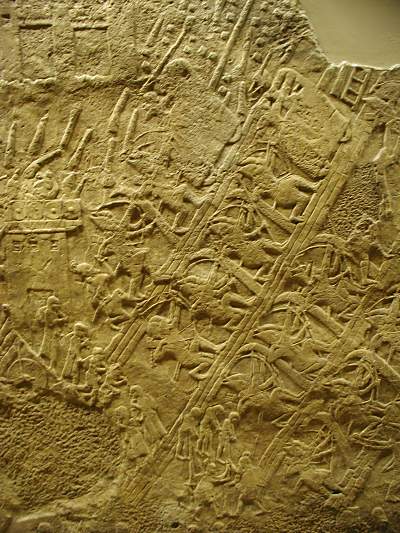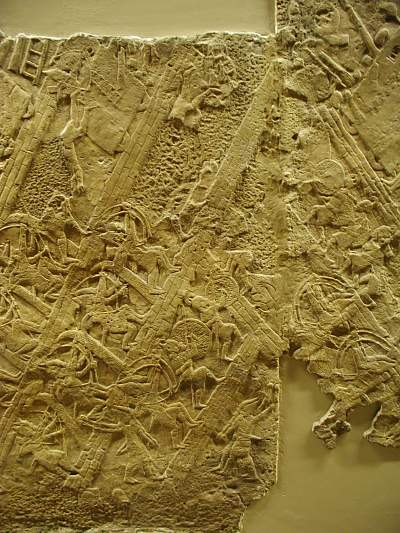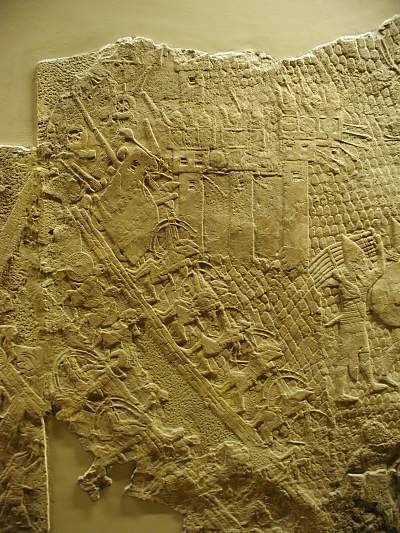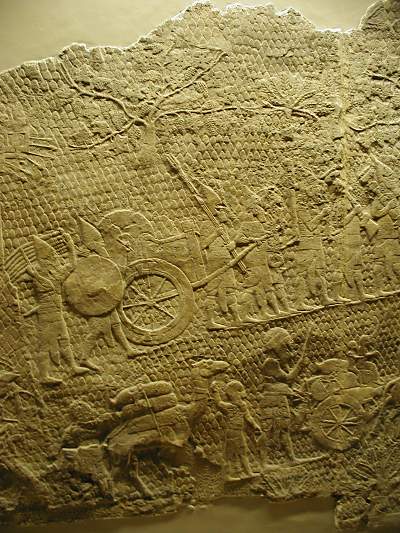Free Photos, July 2002-a special feature of the BiblePlaces newsletter- The following photos are of the famous Lachish Reliefs of Sennacherib at the British Museum. The photographs on this page were all taken by Mark Borisuk. We thank him for allowing us to share these excellent images. -Because of a shortage of server space, the high-resolution images will only be available here through August. Subscribers who miss these may contact Todd Bolen to get these images.-
|
|
|
Slab 1 Advancing columns of Assyrian infantry are shown here marching against Lachish. The background of this and all of the reliefs is that of scale armor or fish scales, probably representing the rocky hills of Judah. Though designated Slab 1, originally there was a short wall of slabs that have not been preserved. The excavator, Layard, remarked that this portion consisted of horsemen and charioteers. |
|
Slab 2, left Spearmen compose this portion of the attack on the city. These warriors advance one-by-one instead of the pairs of archers and slingers. Each spearmen carries a round shield, probably made of twigs or reeds upon a circular frame. Such a shield was both light and resistant to arrows. |
|
|
|
Slab 2, right The left side of Lachish is depicted here and the artist reflected the elevated position of the fortified city as well as the steep slope ascending to the base of its walls (by showing a break in the scale background). A double fortification is evident, and the walls were strengthened by towers placed at regular intervals. |
|
Slab 3, left Slab 3 depicts the center part of Lachish. The city gate is pictured in the center of this slab, but isolated and without connecting walls. The gate is represented as a single, simple doorway. The best preserved Judean warriors in these reliefs are those atop the gatehouse. Two earthen ramps covered with wooden logs are shown, with the right one reaching to the base of the gate. One of the most feared weapons of the day, the Assyrian battering ram ascends the ramp. |
|
|
|
Slab 3, center The main assault on the city takes place just to the right of the gate and includes multiple tree-covered ramps (five total including the right portion of this slab). Four women and two men are shown being deported from the city, while three naked Judeans were impaled on stakes. The deportees each carry a bag over their shoulders. The impaled captives are depicted as already dead, as can be seen by the forward tilt of their heads. Two Assyrian spearmen affix the stake of the right man into the ground. |
|
Slab 3, right The main assault is visible here also. At the bottom of the ramps are pairs of archers. At the top of the ramps are the siege engines with their rams pounding against the city's defenses. A total of seven battering rams are visible in the entire attack scene, the largest number depicted in any Neo-Assyrian battle relief. |
|
|
|
Slab 4, left This slab shows the right-most portion of the battle against Lachish. Another line showing the slope of the city is visible. In the city walls and towers visible at the top, fighting has apparently ceased. Assyrian arrows stick out of the battlements, but no Assyrians are depicted attacking and the defending Judeans appear to have their arms raised in the air. The wheels of two carts or chariots are in mid-air having been thrown down on the attackers. The six spokes of each wheel can be seen as well as portions of their yokes. |
|
Slab 4, right The end of two lines of people begin in this scene. Assyrian soldiers bring up the rear of the top column. They are dressed with conical helmets with earflaps, scale armor, a short tunic, and high boots. Their dress resembles that of earlier archers, but they carry only swords. They carry items captured from the city, probably from the palace of the governor of Lachish. Two soldiers pull a chariot, probably that of the Lachish ruler. This is the only known Judean chariot to date from any extrabiblical source. |
|
See the rest of the Lachish reliefs!
